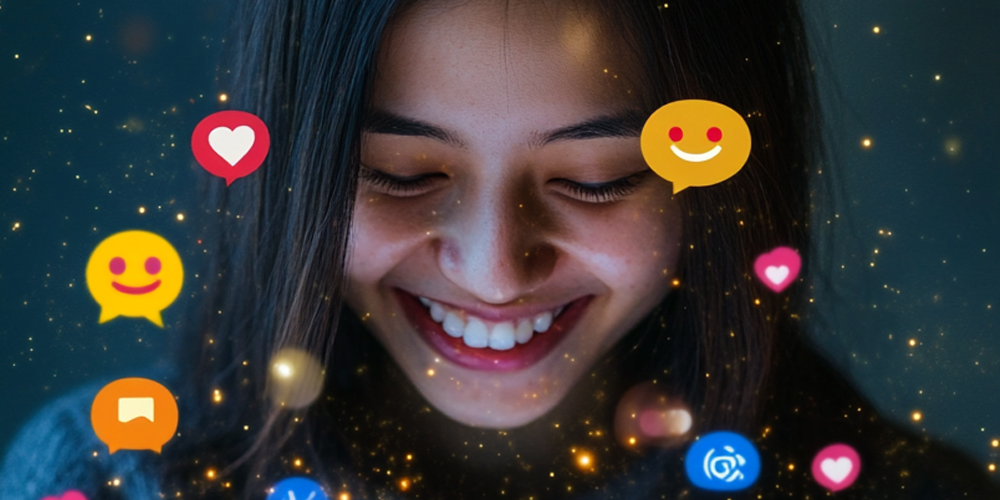he Importance of Reactions in Communication
Understanding Reactions
Reactions serve as a quick way for users to express themselves. Instead of typing out a response, individuals can select an emoji that captures their sentiment. This efficiency is particularly beneficial in our fast-paced world, where time is often of the essence. By reducing the need for lengthy text, reactions allow for a more fluid exchange of ideas and feelings.
Enhancing Emotional Expression
Emotional expression is a cornerstone of effective communication. In face-to-face interactions, we rely on body language and tone to convey our emotions. However, in digital communication, these cues are often absent. Reactions help fill this gap by allowing users to express emotions that may be difficult to articulate in words. For example, a thumbs-up can signify agreement, while a heart emoji can express love or support. This ability to convey emotions enhances the richness of our conversations and makes them more engaging.
The Role of Context in Reactions
Context is crucial in communication, and reactions can provide essential context to messages. An emoji can clarify the sender’s intention and help the recipient interpret the message correctly. For instance, a laughing emoji in response to a joke indicates that the message was received with humor, while a sad face may express sympathy or concern. This contextual clarity can help prevent misunderstandings, which are common in text-based communication.

The Role of Reactions in Strengthening Relationships
Building Connections
Using reactions can significantly impact how we build and maintain relationships. When we react to others’ messages, we acknowledge their thoughts and feelings, demonstrating that we are engaged and interested. This acknowledgment fosters a sense of belonging and connection. For instance, in a group chat, a thumbs-up reaction can encourage others to participate and share their opinions. This sense of community strengthens our relationships over time.
Encouraging Positive Interactions
Positive interactions are essential for healthy relationships. By using reactions that convey support, joy, or appreciation, we can uplift the mood of a conversation. A simple smiley face or celebratory emoji can create a positive atmosphere, making it easier for individuals to express themselves openly. This positivity can lead to stronger relationships, as individuals feel valued and appreciated.
Strengthening Group Dynamics
In group settings, reactions play a vital role in enhancing communication. They allow participants to express their thoughts without interrupting the flow of conversation. For example, if someone shares an idea in a team chat, a quick reaction can show agreement and support without requiring everyone to respond with text. This practice promotes a collaborative environment, where everyone feels heard and respected.
Fostering Empathy
Reactions can also foster empathy in our interactions. When someone shares personal news or experiences, a thoughtful reaction—such as a heart or a sympathetic emoji—can show that we care. This acknowledgment can make a significant difference in how the other person feels, reinforcing their sense of connection and support. Empathy is essential for building strong relationships, and reactions provide a simple yet effective way to convey it.
Reactions in Different Contexts
Personal Relationships
In personal relationships, reactions can enhance emotional connections. Friends and family often use emojis to express love, support, or empathy. For example, if a friend shares exciting news, responding with a celebratory emoji can amplify their joy. Conversely, if someone shares a challenging experience, using a supportive reaction can convey understanding and compassion. This emotional support is vital for nurturing relationships, especially when physical presence is not possible.
Professional Settings
In professional settings, reactions also play a crucial role. Colleagues can use reactions to acknowledge messages, provide feedback, or celebrate achievements. For instance, a thumbs-up on a job well done can motivate team members and foster a sense of accomplishment. This practice enhances workplace relationships, promoting a positive and collaborative culture. Furthermore, using reactions in a professional context can demonstrate appreciation and recognition, which are essential for employee satisfaction.
Online Communities
Online communities thrive on interactions, and reactions can enhance engagement among members. In forums, social media groups, or chat rooms, users can react to posts or comments, showing appreciation or agreement. This practice creates an inclusive environment where everyone feels encouraged to participate. For instance, a supportive reaction to a community member’s post can motivate them to share more openly, fostering a sense of belonging.
The Psychology Behind Reactions
Non-Verbal Communication
Reactions serve as a form of non-verbal communication, much like body language in face-to-face interactions. When we communicate digitally, the lack of physical presence can make it challenging to convey our feelings accurately. Reactions help fill this void by providing visual cues that enhance understanding. For example, a celebratory emoji can convey excitement, while a sad face can express disappointment. These visual cues make our digital communication more nuanced and expressive.
Instant Feedback
One of the significant advantages of reactions is the ability to provide instant feedback. When someone reacts to a message, it validates the sender’s feelings or ideas. This immediate acknowledgment can strengthen the connection between individuals. For instance, if a friend shares good news, a celebratory reaction can enhance their joy and encourage them to share more. This instant feedback mechanism fosters a sense of connection and responsiveness in our interactions.
Reducing Misunderstandings
Misunderstandings can easily occur in text-based communication, where tone and context are often lacking. By using reactions, users can clarify their intentions and feelings. For instance, if someone makes a joke, a laughing emoji can indicate that the message was received in good humor. This practice can help prevent potential conflicts and promote smoother interactions. By providing context through reactions, we can create a more harmonious communication environment.
Tips for Using Reactions Effectively
Choose the Right Reaction
When using reactions, it’s essential to select the most appropriate emoji for the context. Consider the tone of the conversation and the feelings of the person you are communicating with. A well-chosen reaction can enhance the interaction and foster a deeper connection. For example, using a heart emoji in response to someone’s achievement can convey genuine support.
Be Mindful of Frequency
While reactions are valuable, using them excessively can dilute their impact. It’s essential to strike a balance. Use reactions thoughtfully to ensure they maintain their meaning and significance in conversations. Overusing them may lead to a loss of emotional weight, making interactions feel less authentic.
Combine Reactions with Text
Combining reactions with text can enhance communication further. While emojis are great for quick responses, adding a few words can provide additional context. For instance, after reacting to a friend’s achievement with a thumbs-up, adding a message of congratulations can strengthen the sentiment. This combination enriches the interaction and demonstrates a deeper level of engagement.

Personalize Your Reactions
Personalizing your reactions can make them even more meaningful. Instead of relying solely on standard emojis, consider using ones that resonate with your personal style or reflect your unique relationship with the person. This personal touch can enhance the connection and make the recipient feel valued.
The Future of Reactions in Communication
Technological Advancements
As technology continues to evolve, so will the ways we use reactions. Future advancements may include more personalized emojis or even reactions based on AI analysis of the conversation’s context. Such innovations could make our digital interactions even more engaging and meaningful. For instance, AI could suggest the most appropriate reaction based on the emotional tone of the conversation.
Integrating Reactions Across Platforms
The integration of reactions across various platforms is also on the horizon. As social media and messaging apps converge, users may have more opportunities to express themselves through reactions. This integration could enhance communication, allowing for more fluid interactions across different platforms. For example, a reaction used in a messaging app might also be applicable on social media, creating a consistent user experience.
Emphasizing Emotional Intelligence
As reactions become more prevalent, there will likely be a growing emphasis on emotional intelligence in digital communication. Users will need to develop the ability to interpret and respond to reactions thoughtfully. This emphasis on emotional intelligence will enhance interpersonal skills, making digital communication more effective and fulfilling.
Conclusion
In conclusion, reactions play a vital role in strengthening our social interactions. They enhance emotional expression, foster connections, and streamline communication. By understanding how to use reactions effectively, we can improve our relationships, both personally and professionally. As we continue to navigate the digital landscape, embracing reactions will be crucial for maintaining meaningful connections.